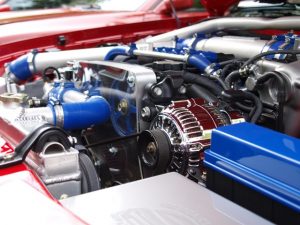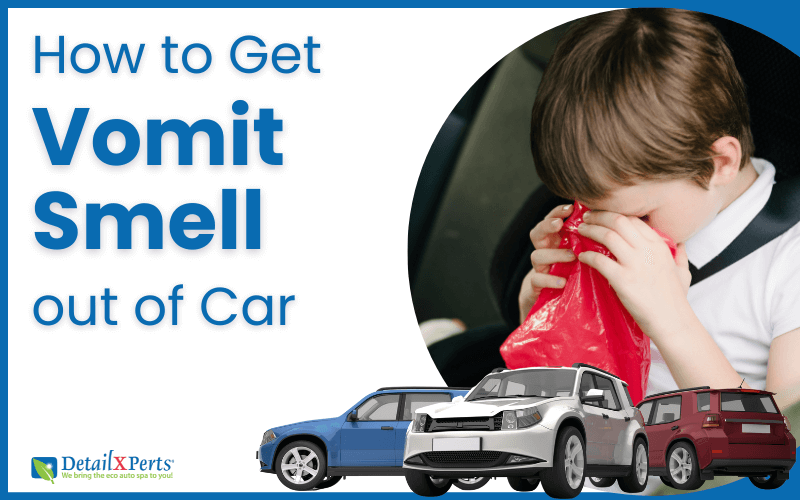When was the last time you cleaned the engine of your car? If you can’t tell when the last is or if you didn’t know that engine cleaning is an important part of vehicle maintenance, this blog post is definitely for you.
Engine Cleaning
The engine bay holds the most vital parts of a car and yet it is one of the most neglected areas when it comes to cleaning. A lot of people are intimidated by the task of cleaning car parts they know very little about. They decide that it’s better to leave it alone and not risk damaging the sensitive components like electrical connections. What most people do not know is that engine cleaning is as important as keeping the car exterior clean. Moreover it should be done regularly. Here are some reasons why.
The Benefits
1. It Will Keep Your Car Running at its Best Condition
When you remove dirt and grease build up, you unclog delicate parts and prevent these contaminants from damaging the parts and interfering with their usual function. You can see the labels and measurement gauges more easily, when they are not covered in grime. Moreover, you will be able to check and refill car fluids as needed.
2. It Saves You Money
It is easier to find where a leak is coming from if your engine is clean. This allows you to catch the problem while it’s still small and manageable saving you the time and resources of having your car fixed for far more extensive damage. Sensitive car parts won’t need replacing as often when they are protected from getting in contact with oil through regular cleaning. Overall maintenance costs will be lower because there will be less rust and corrosion.
3. Your Car Will Have a Higher Resale Value
Potential buyers always pop the hood to see its contents even if they really don’t know what they’re looking at. Even if your car looks brand new on the outside, once buyers see rust or corrosion damage on the engine, their price bid will be significantly cut or they will consider other cars to buy. A clean engine bay is an indicator of proper car maintenance.
How is Engine Cleaning done?
There are a number of different ways to clean an engine.
1. Using an Engine Degreaser and Pressure Washer
This is the most common method for people who prefer to clean their car’s engine themselves. An engine grease remover is applied all over the engine bay. Extra filthy parts will need some brushing and scrubbing before thoroughly rinsing off. You need to know which parts of your engine you need to protect from water and how to clean sensitive components such as battery terminals. You need to dry the water off quickly to avoid rusting. Watch out for the grease remover and dirt residue that can stay on your car’s paint and cause damage if not removed immediately. Only use low pressure when using a washer. It is crucial not to force water into nooks and crannies where it will be hard to dry out.
2. Glass Bead and Soda Blasting
This method uses baking soda or glass beads to eliminate carbon deposits on aluminum parts of the engine. It is usually used to clean the small parts and for cleaning the engine one part at a time. If not done properly, the process can abrade your engine surface and can leave behind a residue that may cause premature engine failure.
3. Hot Tank Engine Cleaning
This involves soaking dirty engine parts in hot water or caustic chemicals. The process usually takes a few hours. It is said to be effective in cleaning parts that have heavy build up but cannot remove rust and paint residue.
4. Engine Carbon Cleaning
Regular use eventually leads to carbon deposits in certain parts of the car (e.g. valves, exhaust) that cause performance issues. The cleaning system passes hydrogen and oxygen in the water through the engine’s air intake and out the exhaust system. This causes a chemical reaction that will eliminate carbon deposits. Make sure to know about the different types of carbon cleaning machines as some kinds can damage auto parts and shorten the lifespan of your car.
5. Steam Engine Cleaning
Steam is very effective for deep cleaning grease and dirt deposits. The process basically replaces pressurized water with steam. It does not require detergents or chemicals for cleaning because the heat from the steam is enough to break down even the hardest to remove build up. Done at the right settings by detailing professionals, the results are extraordinary.
Engine Cleaning for Different Vehicles
Cleaning the engine for different types of vehicles involves similar procedures. After all, an engine serves the same function regardless of vehicle type and therefore will have the same components that are just packaged differently. Because of this, most safety guidelines are applicable to cleaning a small engine like that of a motorcycle as well as cleaning big truck engines.
Prior to cleaning, all engines should be allowed to cool to avoid damage. Electrical components and connecting wires should be protected from getting wet. The same contaminants (dirt, dust, oil, grease, grime) are present in various types of engines in varying quantities. These require similar cleaning agents (e.g. grease remover) and similar ways to take them out (e.g. letting degreaser stand, brushing areas with dirt build up, rinsing, drying off).
Some vehicle engines are more similar than the others. For example, the engine structure of cars, SUVs, and trucks are more alike compared to motorcycle and boat engines.
Motorcycle and boat engines may have parts that are more resilient to water compare to that of a car. These engines are designed to be more exposed to environmental elements like rain and saltwater (for boats). Although there are still electrical components that need extra care. Due to their smaller size, motorcycle and boat engine cleaning are easily done by their owners. Special care for boat engines includes flushing the engine with fresh water after every trip. Control linkages need to be lubricated.
A Closer Look at Steam Cleaning
Benefits
Steam cleaning is an eco-friendly choice. It uses a lot less water (average of 1 gallon/vehicle vs 20-50 gallons/vehicle for a traditional car wash) and rids of the need for hazardous chemical cleaning agents that can be inhaled and will contaminate water sources. The technology is very effective in dissolving grease and grime on engine surfaces. It is the best method when you want to bring back the way it looks when you first bought it. Combining the function of a degreaser and pressure wash, a steam cleaner can considerably shorten the cleaning time. It also decreases the risk of accidents like engine fire from happening. An engine fire is sometimes caused by an oil leak, concealed under grime buildup, coming in contact with the chemicals in the cleaning solution.
Frequency
The environmental conditions where the car is exposed to determines how often you need to have your engine cleaned. If there are minimal levels of dust, snow and grime accumulation like when driving in urban areas, steam cleaning your car’s engine 1-2 times a year is advised. Steam cleaning is needed every 2-3 months when there is excessive snowfall and your car is exposed to road salt. For dusty, arid areas, cleaning once or twice a year with a supplemental wipe down will suffice.
Things to remember
- Wear protective gear such as protective eyewear and gloves. Use clothes that you don’t mind getting dirt and grease on. Steam cleaning can be a messy process and will definitely make your clothes catch gunk that will cause hard-to-remove stains.
- Steam cleaning is known for its environmental benefits. The steam alone can take off burnt-on grime but in case a cleaning agent is still needed, make sure to choose organic products. Double check product labels as some cleaning agents available in the market are not fully biodegradable and safe.
- Steam cleaning should be done in areas that are compliant with regulations on wastewater management. Wastewater facilities are illegal in some areas.
- Check the engine’s temperature before starting the steam cleaning process. Spraying water on a hot engine can cause major damage and so can spraying hot steam on an already hot engine. The reaction this will cause is potentially dangerous for the one doing the cleaning as well. Let the engine cool down before spraying on steam.
- Protect major electrical parts and other delicate areas such as the alternator and air intake systems by covering them with plastic or aluminum foil. Remember that even if it is in gas form, steam will condense into water once in contact with a surface that has a lower temperature. This water can seep in areas that need to be kept dry.
- Know how to properly use the steam cleaner. The steam cleaner’s wand should be kept moving and held at a proper angle and distance (about an arm’s length) from the engine to avoid causing damage. It should also be set at the right temperature.
Things to Avoid
- Do not steam clean your engine when the weather and overall temperature is not conducive. Low temperatures can cause grease and dust to harden and bind stronger onto the engine’s surface, making it harder to remove. The heat from the steam makes it very uncomfortable to clean during hot, humid days.
- Do not perform steam cleaning in your own garage or any private space that does not comply with environmental regulations on car wash wastewater management. Your garage lacks the safety features that a professional car wash facility has. A confined space won’t have the proper ventilation to let out harmful vapors that are due to the toxic chemicals found in car fluids. Oil splatters during the cleaning process may also stain the walls.
- Do not attempt to do it by yourself when you do not have the proper training and the experience in engine steam cleaning. The process can be very dangerous and is not something that can be DIY-ed. To avoid causing damage to your engine parts and adverse effects on your health, leave the cleaning to professionally trained detailers. The will have the right equipment ready and will dispose of wastewater and toxic residue properly.
How to Steam Clean an Engine
- Remove all visible debris like dried leaves and loose dirt by brushing them off.
- Apply steam to the under-hood insulation and the hood itself to remove grime and dirt.
- Apply a non-petroleum engine grease remover to the engine while it is warm. This will help melt burnt-on grease and make it easier to wipe off. Apply 2-3 coats of the degreaser if needed.
- Rinse the engine using the steam cleaner. Wipe off all the degreased muck off of the engine surface afterward.
Watch this video to see our team steam clean an engine.
Cost Comparison
Traditional Engine Cleaning (do-it-yourself/hot tank engine cleaning) costs around $20-$70. This may be the cheapest among the engine cleaning methods, but considering the frequency of cleaning required you may end up spending more in the long run. Glass Bead and Soda Blasting costs $100-$400, depending on the engine type. Engine Steam Cleaning costs $145-$345 depending on the location. Many patrons of this method attest that the benefits that they get out of it, like extending their car’s lifespan, make steam cleaning a better choice despite the relatively steep price. You will be paying for not only your car’s maintenance but also for environmentally safe practices that will benefit the community.
If you have questions or if you have other engine cleaning advice you can share, feel free to post a comment below. We aim to provide you with comprehensive information on how to care for your vehicles and we’ll gladly take note of your inputs to further better our content. For more information about steam cleaning, schedule an appointment with us.
Enjoyed this post? Sign up for our newsletter to receive more valuable tips, ideas, coupons, and extras!





